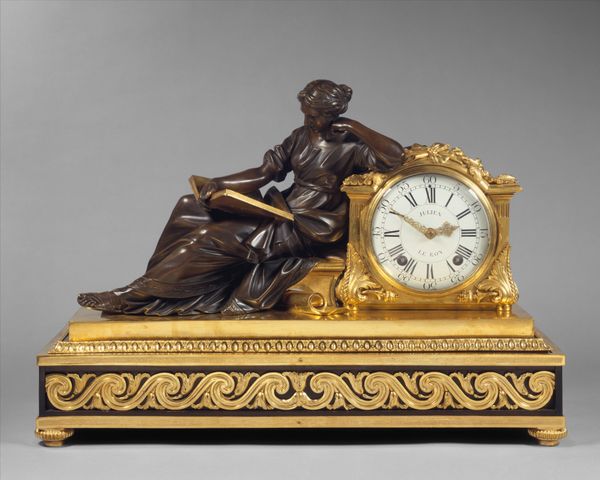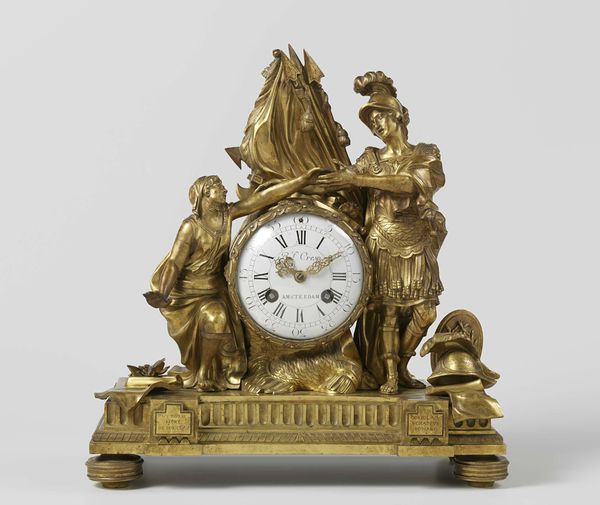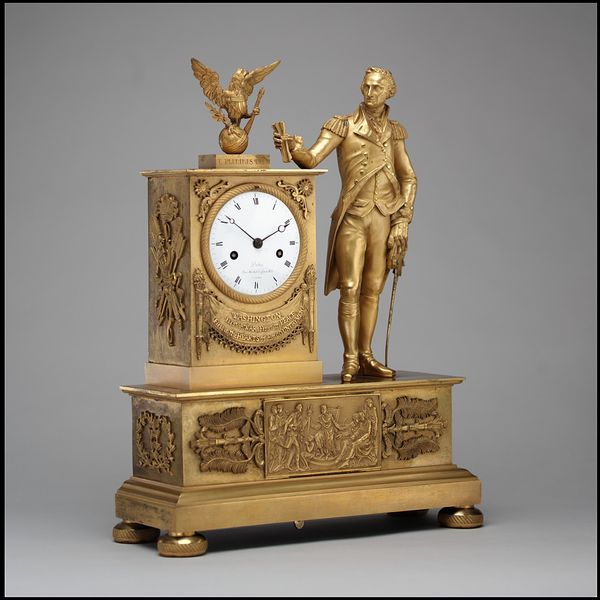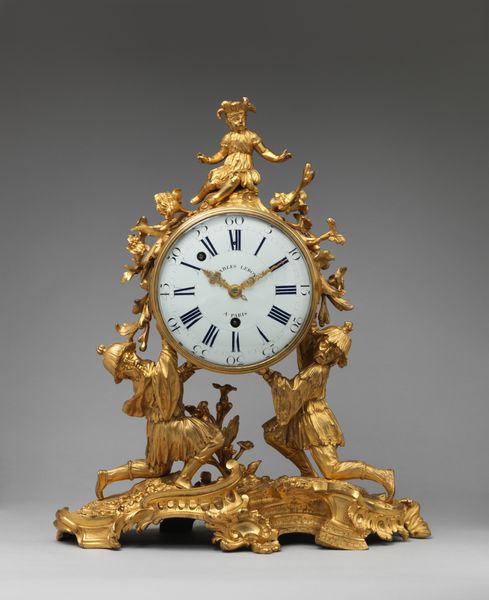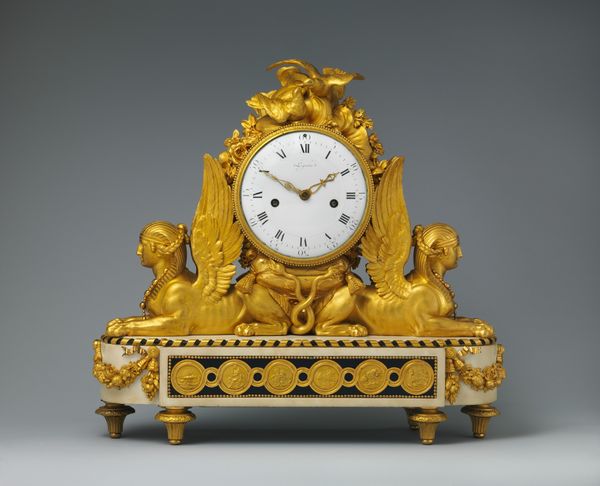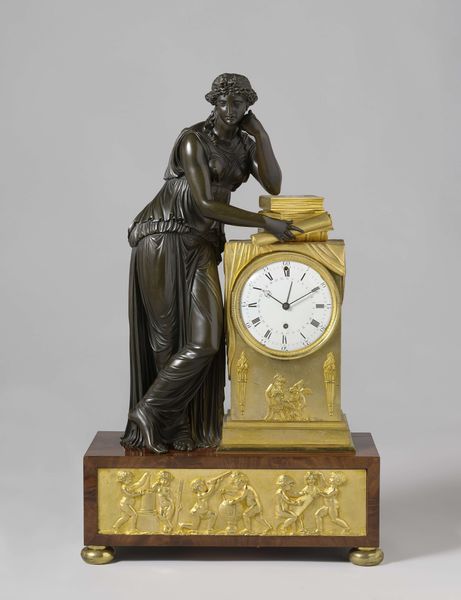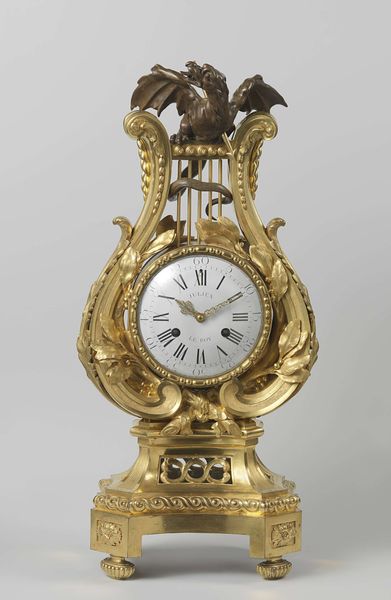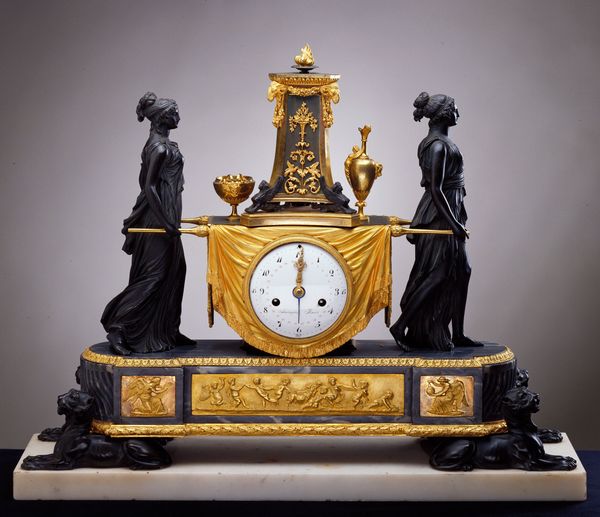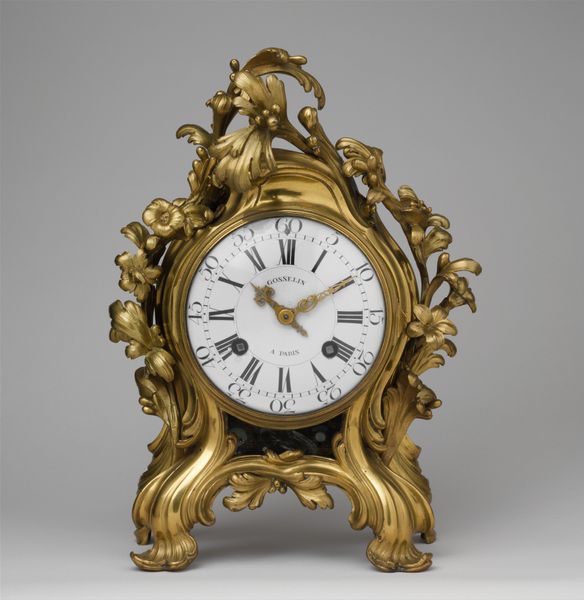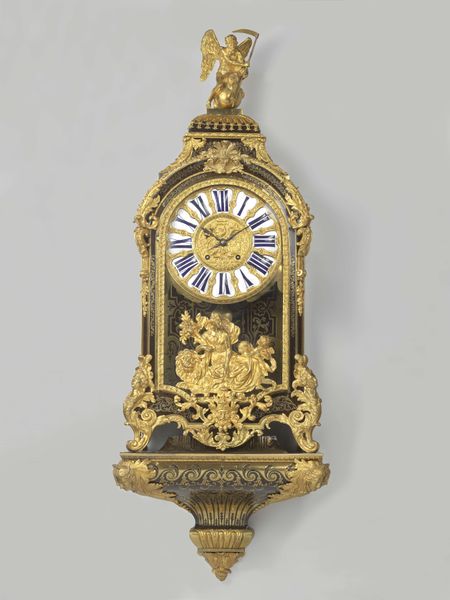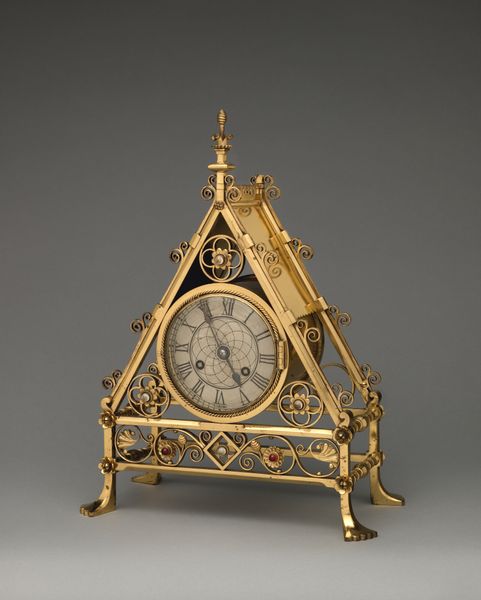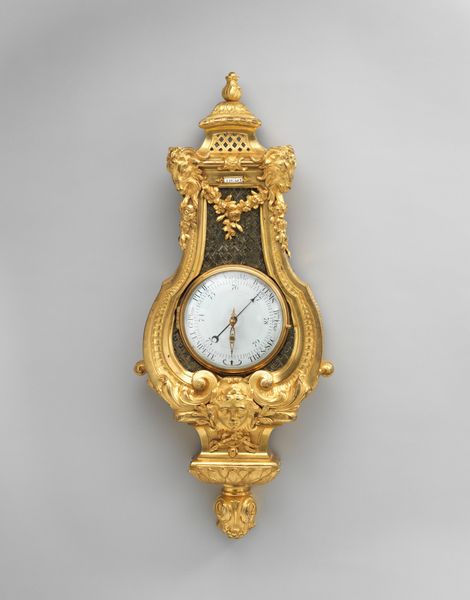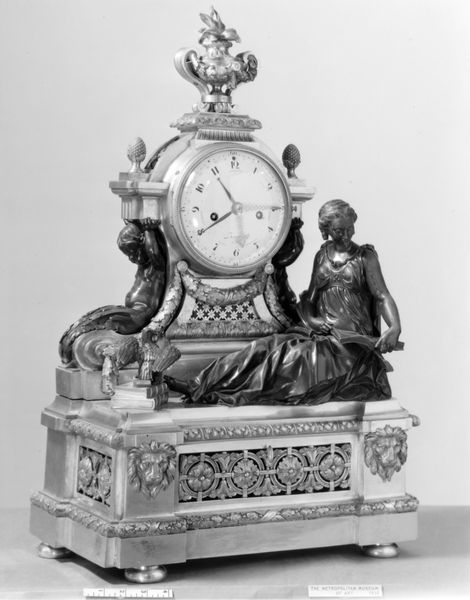
brass, bronze, sculpture
#
brass
#
sculpture
#
bronze
#
figuration
#
sculpture
#
decorative-art
#
rococo
#
angel
Dimensions: Overall (confirmed): 28 × 20 1/2 × 10 1/2 in., 110 lb. (71.1 × 52.1 × 26.7 cm, 49.9 kg)
Copyright: Public Domain
Jean-André Lepaute created this Mantel clock or Pendule Uranie, likely in France, sometime in the late 18th century, using bronze and gilded bronze. It embodies the era's fascination with classical antiquity. The figure of Urania, the Greek muse of astronomy, signifies the clock's function as a regulator of time, linking earthly hours to cosmic order. Clocks like this weren't just time-telling devices; they were potent symbols of wealth, taste, and scientific curiosity during the Enlightenment. This was a period when the French aristocracy and educated bourgeoisie increasingly valued displays of knowledge and refinement. Note the cherubic figure recording celestial data: the clock embodies Enlightenment ideals of scientific inquiry. These objects offer insights into the patronage systems and artistic networks of the time. To fully understand them we need to consult archival sources such as guild records, inventories of aristocratic collections, and treatises on horology, all of which can reveal the complex social life of art objects.
Comments
No comments
Be the first to comment and join the conversation on the ultimate creative platform.
